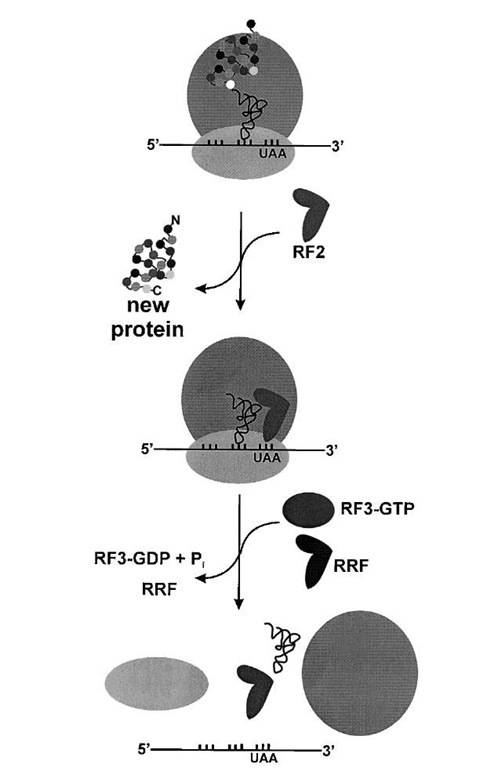Following release of the synthesized protein, the ribo-some contains an empty tRNA in the P-site or E-site, and mRNA is still bound with the stop codon in the A-site. This arrangement of components is the post-termination complex. A protein known as the ribosome recycling factor (RRF) promotes the dissociation of this complex in preparation for translation of another gene. This recycling of translation components has been called the fourth step of protein synthesis, after formation of the initiation complex, elongation, and release of the full-length polypeptide at the stop codon. If the post-termination complex is not dissociated, the ribosome remains bound to the mRNA and unprogrammed translation can be reinitiated downstream of the stop codon. In fact, RRF is necessary for prokaryotic cell growth. Dissociation of the post-termination complex by RRF is likely facilitated by EF-G and IF3, and this completion of the protein synthesis cycle frees the translational machinery to read another mRNA.
FIGURE 9 Termination of protein synthesis and ribosome recycling. In prokaryotes, RF1 hydrolyzes the newly synthesized protein at stop codons UAG and UAA, while RF2 recognizes stop codons UGA and UAA. The GTPase RF3 stimulates release of either RF1 or RF2. In eukaryotes a single protein recognizes all stop codons. The final step of translation is dissociation of the inactive 70S complex, stimulated by the ribosome recycling factor (RRF).

